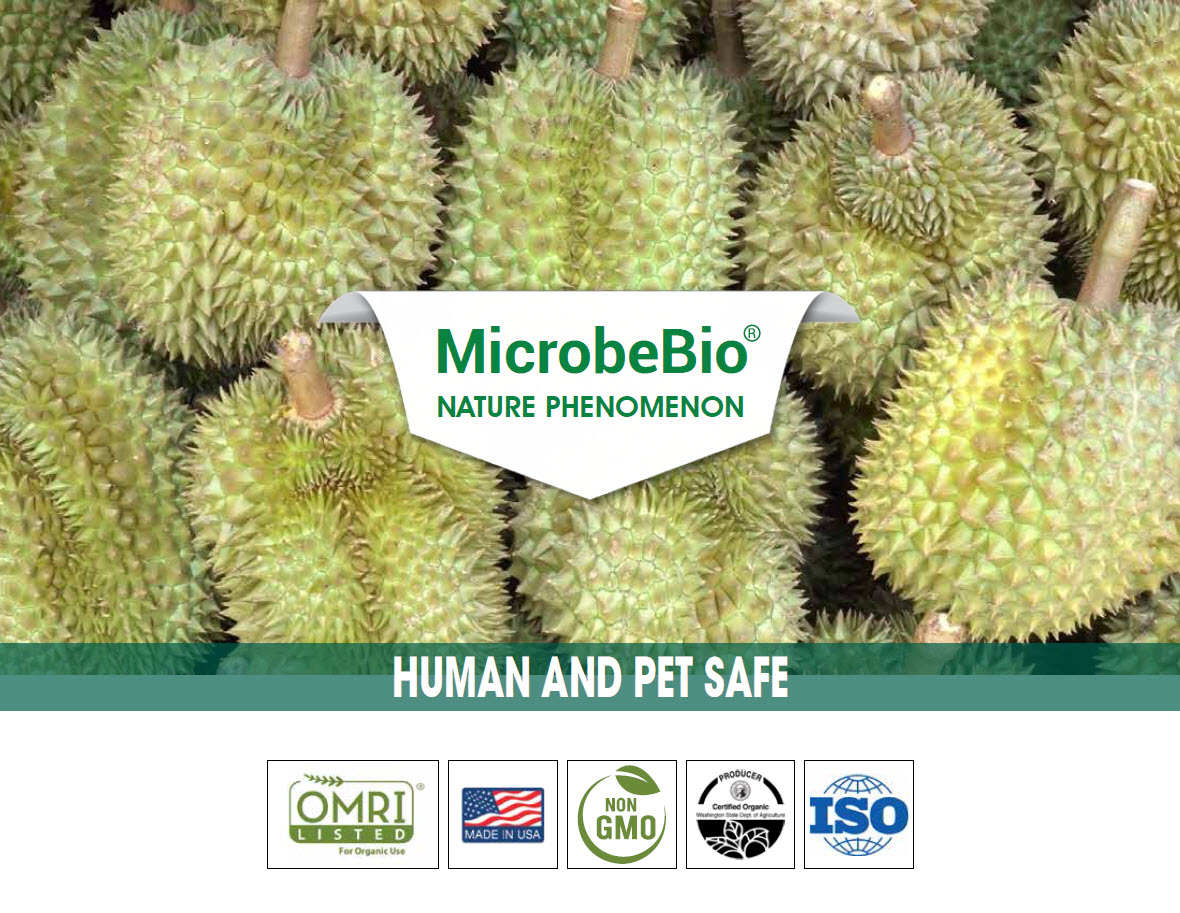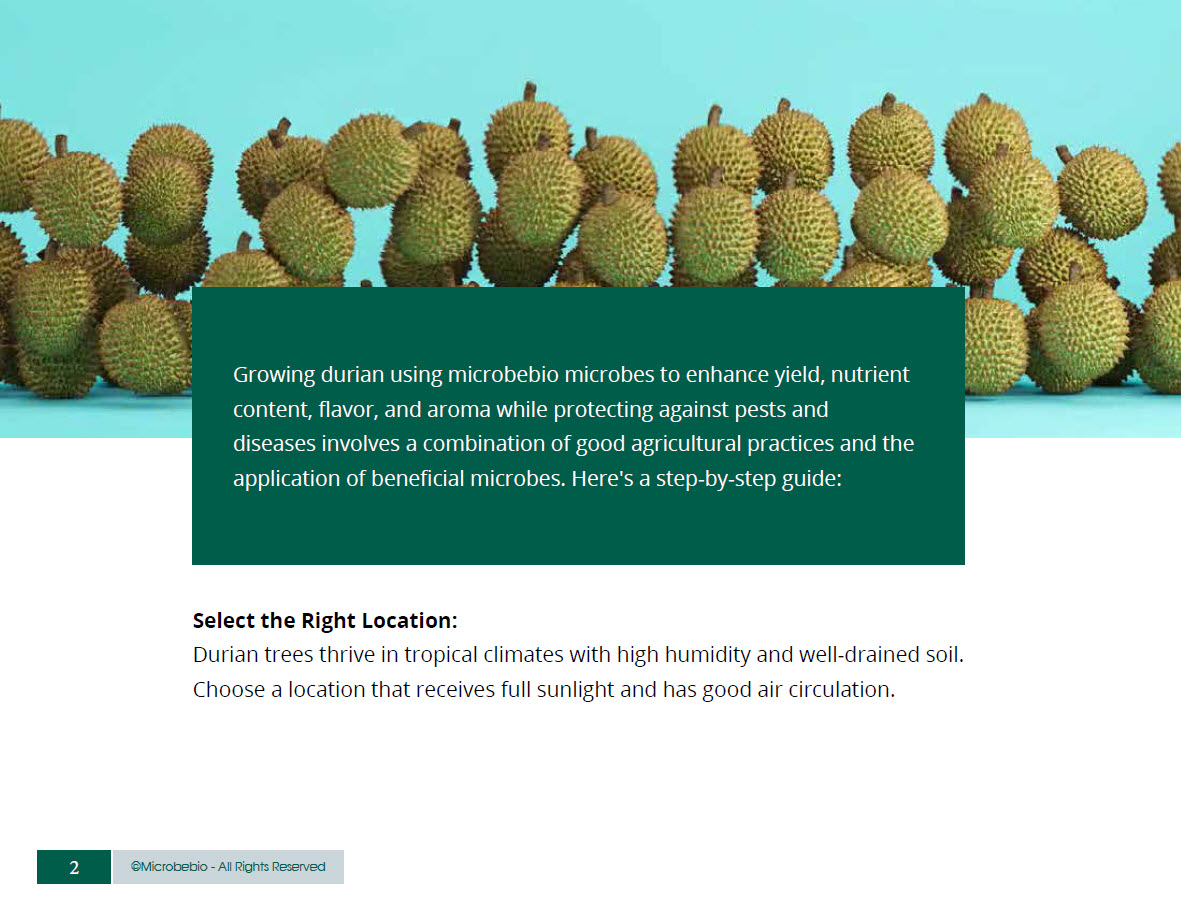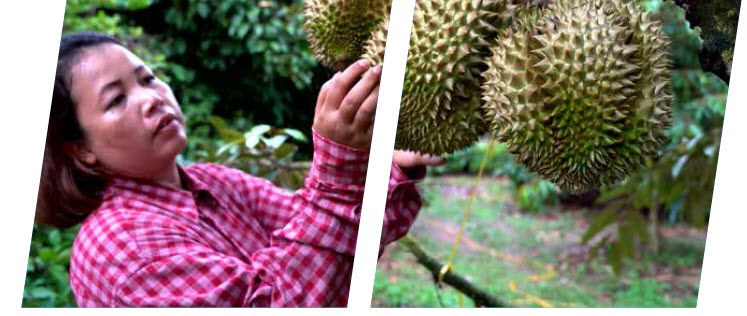

Prepare the Soil:
Conduct a soil test to determine its pH and nutrient levels. Amend the soil with organic matter such as compost to improve its fertility and water retention capacity.
Select Disease-Resistant Varieties:
Choose durian varieties that are known to be resistant to common pests and diseases in your region.
Microbebio Microbes:
Consult with experts in microbial agriculture to select the right beneficial microbes for your durian orchard.
Consider using mycorrhizal fungi, rhizobacteria, and other beneficial microorganisms that can improve nutrient uptake and protect against soil-borne diseases.
Planting:
Plant durian trees at the appropriate spacing to ensure good air circulation and prevent overcrowding. When planting, incorporate the selected beneficial microbes into the planting holes or mix them with the soil.
Nutrient Management:
Implement regular fertilization
schedule based on the results of your soil test. Utilize organic fertilizers and supplements that promote the growth of beneficial microbes in the soil.
Water Management:
Durian trees require consistent watering, especially during dry periods. Avoid overwatering, as this can lead to root rot and other fungal diseases.
Pest and Disease Control:
Regularly monitor your durian trees for signs of pests and diseases.
Use integrated pest management (IPM) techniques, which may include natural predators and beneficial insects to control pests. The beneficial microbes you’ve applied to the soil can also help protect against soil-borne diseases.

Pruning and Maintenance: Prune your durian trees regularly to promote good airflow, reduce disease pressure, and improve fruit production.
Harvesting: Harvest durian fruits when they are fully ripe. This is typically
indicated by a strong aroma and a slight yield to gentle pressure. Handle the fruits gently to avoid bruising.
Post-Harvest Care:
Properly store and handle the harvested fruits to maintain their quality and aroma. Consider using controlled atmosphere storage to extend
the shelf life and aroma of the durians.
Record Keeping:
Keep detailed records of your farming practices, including the application of beneficial microbes, fertilization, and pest/ disease management. This will help you track your progress and make informed decisions for future seasons.

CONCLUSION
Remember that successful durian cultivation with Microbebio microbes may require some experimentation and adjustments to suit your specific soil and climate conditions. Consulting with local Microbebio agricultural extension services and experts in microbial agriculture can be beneficial for tailoring your approach to your specific circumstances.